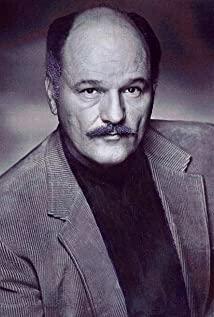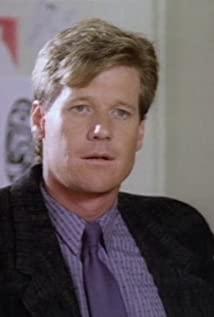The movie "Dancing With Wolves" tells the story of Dunbar, an American soldier stationed on the western frontier, and the Indian Sioux, in the context of the westward movement, getting along day and night, getting along with each other, and establishing a pure and sincere friendship after in-depth understanding. The protagonist of the story, Lieutenant Dunbar, made great achievements in the Civil War. In order to commend him, the government gave him the privilege of choosing a station at will. Dunbar longed for a new life, so he chose the remote and remote western wasteland inhabited by the Indian Sioux. At first, the Sioux showed strong resistance to his arrival. When Dunbar approached and tried to understand their lives, and rescued a white girl who grew up in the Sioux, the relationship between the tribe and him gradually eased. . He also got an Indian name for it: Dances with Wolves. His riding skills amazed the people, his kindness was praised by everyone, and he also fell in love with white girls for a long time. The incompatibility at the beginning gradually disappeared when everyone got along, and everything looked beautiful. In a war against foreign invasions, Dunbar was named a national hero of the Sioux by the local Indians. However, the decline of horseback culture has become inevitable. White soldiers came to this land to drive out Sioux people and capture "traitor" Dunbar. This simple land slowly changed its appearance... The film took more than three hours to show us The growth of a character, a historical past, the protection of a group of people, the disappearance of a culture. I just want to say that when horseback culture meets modern civilization, conflicts are inevitable, and it can only leave countless sadness. There are many places in the film that are very touching and worthy of our deep consideration. Below I will talk about my feelings in combination with specific details.
a character's growth
The story begins on the battlefield of the American Civil War. An officer's feet were already bloody and bloody. He was seriously injured and put on his military boots. He resolutely rode his horse through the hail of bullets by the enemy like a hero who was going to die. In the end, he miraculously returned safely. , and help the army turn defeat into victory. This is our hero Dunbar, as an officer, he is determined, brave, and brave. But no one could read his mind. Just when everyone thought that he was about to be promoted and had a bright future, he volunteered to be assigned to the western wasteland full of danger and unknown to be stationed on the frontier. This choice may stem from his dislike and questioning of war, or perhaps because he is thinking about the meaning of life. A solitary soul sets out from here, on a journey of exploration that is radically different from worldly values. But when he arrived at the frontier camp, he found that there was no one to guard him. With a glimmer of hope, he stayed at the camp alone and began to live in the wilderness by himself, slowly befriending a wolf. During this period, Dunbar gradually got to know the local Indians and began to learn their language. From the original fear to admiration, he finally left the camp to live with the Indians, not only gained friendship, but also gained love, started a family, and became a member of the Indians. It can be said that Dunbar is happy here. He has seen another vast world. There is no political intrigue here. Although the living conditions are difficult, he can have a free and free life. As Dunbar said, the Indians fought just to reserve food, and there was no politics, it was pure beauty. After having the experience of fighting for food with his Indian partners, he gradually understood this nation, so he gradually integrated into this culture. He began to love nature and his homeland like the Indians, and he also established a natural and harmonious relationship of mutual dependence and mutual trust with them. Dunbar seems to have suddenly found himself, no longer lonely, his spirit has been satisfied, and since then he is no longer a pawn in the war machine, he has become a flesh and blood individual. In a sense, it was the Indians who gave him a second life and made him a hero who knew right and wrong from a dedicated soldier. Dunbar gradually grew up in this remote wasteland.
A historical past
film reproduces the history of conquering the wasteland and driving out Indians in the western expansion of the United States. It examines the complex themes of race, culture, conflict and peace from a new perspective, triggering people's reflection on the American western expansion movement. At that time, the US government's attitude towards indigenous peoples was "to surrender if you are good, and pay back if you are bad", forcing all indigenous people to obey Western values and live according to the way of thinking of white people. As described in the film, Citi soldiers saw the hatred and contempt of the Indians, "all the 'red fans' who refuse to change are the enemies of America." In the values of white people, the Indian indigenous people represent backwardness. They are naked, they are painted with paints that symbolize national totems, and they hold primitive bows and arrows. They hunt for a living and live a life of drinking blood. Therefore, white people who claim to be civilized people want to change the "savages" in their eyes, under the guise of "bringing civilization into the wild", in fact, most of them are to satisfy their desire to conquer and move towards the homeland of the Indians. Recalling the series of practices of the US government towards the indigenous people in that era, we have to say that it was really cruel, but we must also understand: history is advancing, and the movement of western expansion is inevitable. Modern Western civilization originated from the great geographical discovery of the exploration of the unknown world. It can be said that this beginning is doomed to its characteristics of conquest. With the complete establishment of Western material civilization and spiritual civilization, the way of thinking of that central value is more popular among Westerners. ingrained in the brain. At the same time, the development of industrial civilization has left the horseback civilization far behind. The efficiency of guns and ammunition is far greater than that of bows and arrows. History is like a wheel, rolling forward...
the guardian of a group of people
The movie portrays a group of simple and lovely Indian Sioux who love the land under their feet and everything that nature has given them, and they guard their beautiful homeland with their hearts. They believe that no one owns the land. The land, the sky, and the sea are all given by the great gods. No one can own it, and no one can occupy it. They can only enjoy the gift of the earth and use the land instead of owning it. They are in awe of nature, and they have their own unique way of living in harmony with nature. Hunting bison is purely for survival, so they will control the amount of hunting to ensure the balance of nature. Obviously, this is not the same as ignoring the natural ecology. The contrast between the white people of the environment is certainly worthy of our modern thinking. And the Indian Sioux, from the elderly to the children, are doing their best to guard their homes. I remember a scene in the movie, when the murderous Pani people attacked, a few children risked their lives to shoot arrows secretly in the corner. , and the left-behind grandmother was not afraid of the enemy, as if she was telling the children behind her to be brave and strong with her determined eyes. There is also a small detail that reflects their defense of their homeland from the side. Feng Zhongfang rode a horse and waved a long spear and shouted, "I am Feng Zhongfang, do you think I am afraid of you?" Dances with Wolves" was killed. I didn't understand much at first, I felt that this person was insane, but gradually I understood. Although he was reckless, he was cute and reckless. His subconscious was afraid. Like other people, he thought white people were terrible, but he didn't allow it. Their land was invaded, so despite their fears, they challenged Dunbar with unease, and this is how this group of Indian Sioux defended their homeland in their own way as the wheels of history rolled forward.
A Culture Gone
The last paragraph of the film says: Thirteen years later, their homes destroyed, their buffalos gone, the last band of free Sioux submitted to white authority at Fort Robinson, Nebraska. The great horse culture of the plains was gone and the American frontier was soon to pass into history. When white gunshots rang out in this land, Indian civilization was destined to disappear with that gunshot. This ending was foreshadowed long ago when the totem of the Sioux, the bison, was hunted uncontrollably by white people, and when the wolf named "Two White Sox" was ruthlessly shot by American soldiers. The white army began to move into the land, and they punched Dunbar, dressed as a Native American, and they ripped open the pages of his diary as toilet paper and told us that the end must be tragic. It is not that the so-called civilized people did not recognize Dunbar in his changed clothes, they regarded him as a "traitor", so whether Dunbar was their countryman or not before, they treated Dunbar as much as they were, and treated him like that. How could the Sioux who have never met each other be soft-hearted? From this we can also see that the importance of clothing to a nation, like language, is also a symbol of culture.
As a Linguistics and Applied Linguistics major, I feel that this film can be used as a video teaching material for Linguistics majors, and it can help us understand the bond and tool functions of language. Dunbar came to the Sioux tribe. In order to communicate with them, he began to learn their words. Fortunately, with the "matchmaking" of white girls, his progress could be so great. Language provides an important role for their mutual understanding, and also reflects the value of language communication tools. The white girl came to the Sioux very early, and because she did not use it for a long time, she was "aphasia", which shows the importance of the language environment for a person to learn a language. The above are some of my feelings from watching the movie. The classic movies with high ratings are really good!
View more about Dances with Wolves reviews











